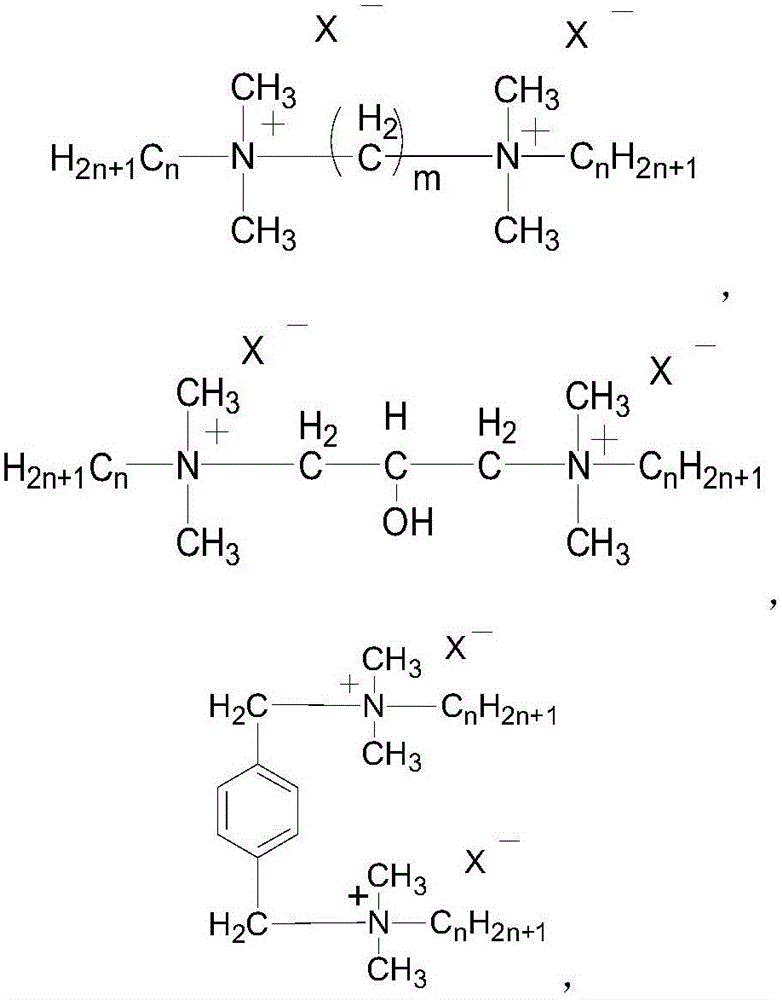Non-aqueous solvent dyeing method of washing-free reactive dye
A technology of reactive dyes and dyeing methods, which is applied in the field of non-aqueous solvent dyeing of non-wash reactive dyes, can solve the problems of lowering dye fastness performance, dyeing and dyeing rate, etc., achieves excellent color fastness, prevents dyeing, Reduce the effect of electrostatic repulsion
- Summary
- Abstract
- Description
- Claims
- Application Information
AI Technical Summary
Problems solved by technology
Method used
Image
Examples
Embodiment 1
[0072] The present embodiment provides a kind of non-aqueous solvent dyeing method of no-water reactive dye that improves dyeing uniformity, and it comprises the following steps:
[0073] Soak 10g of pure cotton knitted fabric in 10g / L sodium carbonate aqueous solution, swell at 95°C for 15min, then dip twice and roll twice to control the liquid retention rate to 100%, and bake at 60°C for 10min;
[0074] Put the knitted fabric pretreated by sodium carbonate aqueous solution in the dyeing cup, add 0.3g (3% o.m.f) AviteraRedSE dye, 0.1g hexadecyltrimethylammonium bromide, 0.2g octaalkyltrimethyl chloride Ammonium chloride, 40mL of dimethyl sulfoxide, dyeing at 35°C, slowly increase the temperature at a rate of 1°C / min, slowly add 150mL of tetrachlorethylene during the heating process, raise the temperature to 98°C and keep for 2 hours;
[0075] Take out the dyed knitted fabric sample, dry it and recover the solvent, then place it in the color-fixing solution with a pH value of ...
Embodiment 2
[0081] The present embodiment provides a kind of non-aqueous solvent dyeing method of no-water reactive dye that improves dyeing uniformity, and it comprises the following steps:
[0082] Soak 10g of cotton / linen (60% cotton + 40% linen) blended knitting fabric in a sodium carbonate solution with a concentration of 15g / L for 40 minutes at room temperature, dipping and rolling, control the liquid retention rate to 100%, and then dry , the drying temperature is 60°C, and the drying time is 10 minutes;
[0083] Put the blended knitted fabric pretreated by sodium carbonate solution in the dyeing cup, add 0.3g (3% o.m.f) NovacronSuperBlackG dye, 0.10g benzyltriethylammonium bromide, 0.10g octadecyltrimethyl Ammonium chloride, 40mL of N,N-dimethylacetamide, dyeing at 35°C, slowly increase the temperature at a rate of 1°C / min, slowly add 300mL of n-heptane during the heating process, heat up to 110°C and keep for 2h ;
[0084] Take out the dyed blended knitted fabric sample, dry it...
Embodiment 3
[0089] The present embodiment provides a kind of non-aqueous solvent dyeing method of no-water reactive dye that improves dyeing uniformity, and it comprises the following steps:
[0090] Soak 10g of cotton / nylon (70% cotton + 30% nylon) blended knitting fabric in a sodium bicarbonate solution with a concentration of 15g / L at 60°C for 20min, dipping and rolling to control the liquid retention rate to 100%, and then carry out Drying, the drying temperature is 60°C, and the drying time is 10 minutes.
[0091] Put the blended knitted fabric pretreated by sodium bicarbonate solution in the dyeing cup, add 0.3g (3% o.m.f) NovacronYellowS-3R dye, 0.2g quaternary ammonium salt E, 30mL N,N-dimethylformamide , Dyeing at 35°C, slowly heating up at a heating rate of 1°C / min, slowly adding 300mL of n-hexane during the heating process, raising the temperature to 110°C for 2 hours; the structural formula of the quaternary ammonium salt E is as follows:
[0092]
[0093] Take out the dye...
PUM
| Property | Measurement | Unit |
|---|---|---|
| concentration | aaaaa | aaaaa |
| concentration | aaaaa | aaaaa |
Abstract
Description
Claims
Application Information
 Login to View More
Login to View More - R&D
- Intellectual Property
- Life Sciences
- Materials
- Tech Scout
- Unparalleled Data Quality
- Higher Quality Content
- 60% Fewer Hallucinations
Browse by: Latest US Patents, China's latest patents, Technical Efficacy Thesaurus, Application Domain, Technology Topic, Popular Technical Reports.
© 2025 PatSnap. All rights reserved.Legal|Privacy policy|Modern Slavery Act Transparency Statement|Sitemap|About US| Contact US: help@patsnap.com



